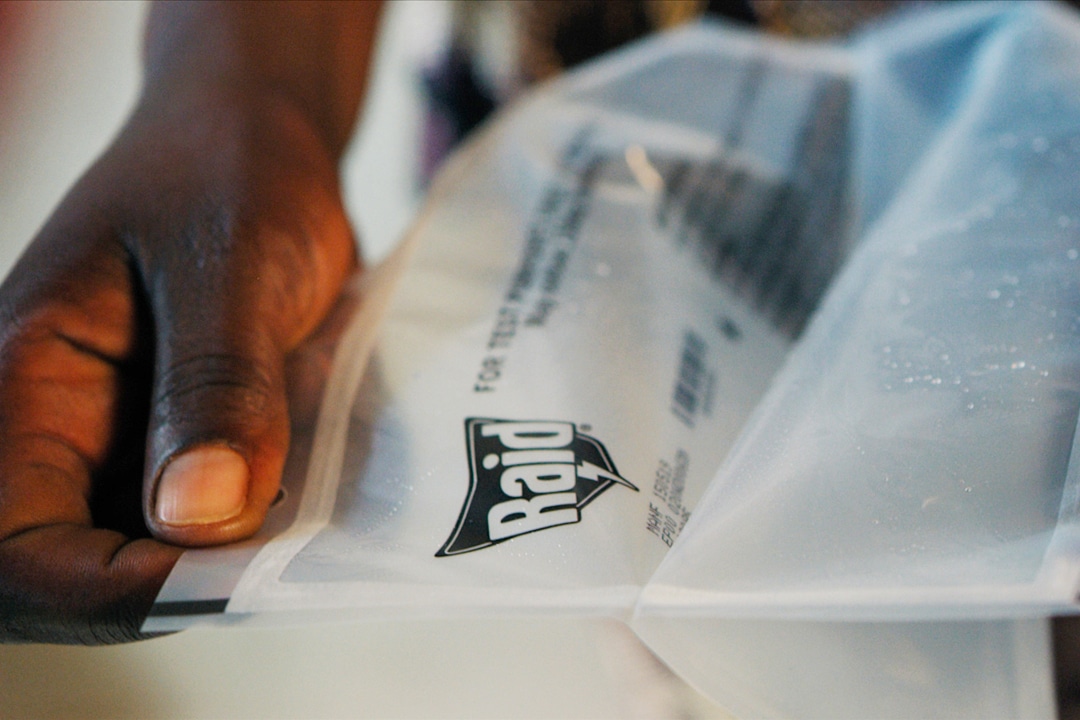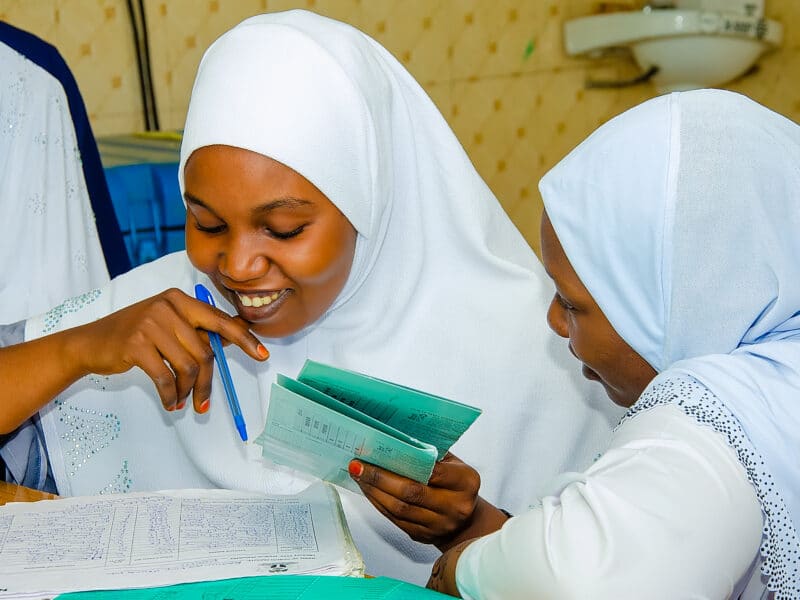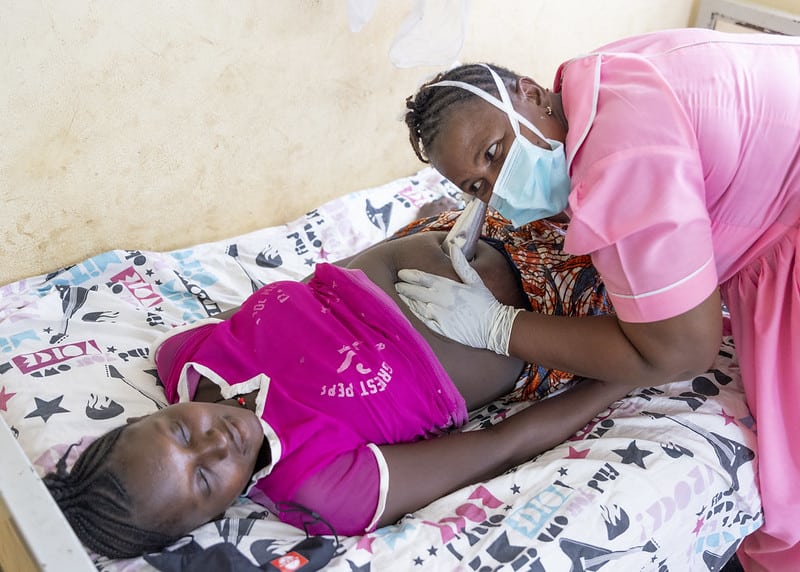Preliminary data from Kenya shows that a new repellent against disease-carrying mosquitoes is working better than researchers had even hoped, an important step toward convincing the World Health Organization to recommend broader use of the product for malaria control.
The research, conducted by the Advancing Evidence for the Global Implementation of Spatial Repellents (AEGIS) consortium, of which the Johns Hopkins Center for Communication Programs is a member, is a building block toward introducing spatial repellents as a new tool in the fight against malaria, a fight that mosquitoes appear to be winning as insecticides and treated bed nets lose their power.
Long seen as the solution to reducing malaria cases in Africa, those tactics are losing ground as mosquitoes are changing their behavior and evolving to become resistant to these common malaria control methods.
This is the first time that spatial repellents have been tested at this scale in sub-Saharan Africa, where malaria burden is highest. For two years, AEGIS has been studying the efficacy of Mosquito Shield™, an indoor spatial repellent that is basically a small sheet of plastic film coated with an insecticide and attached to a wall inside the house. It is currently designed to work for 28 days.
As part of the AEGIS work, led by the University of Notre Dame and funded by Unitaid, Johns Hopkins and Kenya Medical Research Institute (KEMRI) researchers have been conducting social science research to understand peoples’ experiences with the product and how it fits into the broader malaria prevention landscape.
For example, Johns Hopkins and KEMRI found that some people in the spatial repellents trial reported they had stopped using bed nets because they assumed they were no longer needed. That was an unintended consequence and the finding prompted additional communication to households about the importance of continuing to use current prevention tools while new ones are tested.
“We have been collecting really rich and comprehensive information on what it would take for this product to be successful, what it would take for it to be implemented successfully, and scaled up successfully,” says CCP’s April Monroe, who has played a key role in the work. “And that involves talking to end users over time to understand their experiences, identifying potential challenges that might need to be overcome and identifying how to position and communicate about this tool effectively.”
Spatial repellents could be key to protecting people from mosquitoes when they are not sleeping (and would thus not be under a treated bed net). Malaria experts have noted that disease-causing mosquitoes, which used to be a problem mostly at night and indoors, have been biting in the evening and early morning hours. Spatial repellents could provide additional protection to people watching TV or studying at night before bed as well as to those living in locations where nets and indoor residual spraying may not be feasible, such as refugees or internally displaced populations.
Johns Hopkins and KEMRI researchers are also making observations at other locations in the community to see where people spend time away from home. There could be locations such as bars or schools where spatial repellents could also be useful.
One thing Johns Hopkins and KEMRI researchers noted from the social science research in Kenya was the importance of how the product is installed. Observations of the products in peoples’ homes and interviews with users over time revealed issues such as tape not sticking as well to certain wall surfaces, a film of soot forming on the product from kitchen smoke and hooks falling off or being used to hang other household items. This information can help inform installation methods for Mosquito Shield™ or similar products in the future that account for how people interact with the product in different environments.
SC Johnson, the company that makes the spatial repellant, is working to create a new version of the product that can last for months, instead of the current 28 days. Monroe says it’s clear that not having to replace them as often could make it easier to distribute, use and dispose of the spatial repellents at-scale.
Malaria deaths, which fell to a historic low of about 575,000 in 2019, rose significantly over the next two years and stood at 620,000 in 2021, the last year for which there is global data. Malaria mostly kills children under the age of 5 and pregnant women in sub-Saharan Africa.
This month, Monroe moderated a symposium at the American Society of Tropical Medicine and Hygiene’s annual meeting about enhancing development and evaluation of new vector control technologies through social and behavioral research. The symposium showcased the value of engaging end-users and other key stakeholders in efficacy trials and included presentations on social science research from AEGIS and two other Unitaid-funded vector control projects.
For the WHO to recommend the use of a new category of malaria control, the international body wants to see successful trials in at least two separate countries to show that it can be effective in different contexts. AEGIS research is being conducted in Mali and the results there are eagerly awaited. That stamp of approval could go a long way toward getting funding to provide these new repellents to the countries that need it most.
In the meantime, the Johns Hopkins team and its partners will be conducting social science research in Uganda to better understand opportunities for deployment in a refugee settlement context, and in Sri Lanka to understand how the product works to protect people from other mosquito-borne diseases such as dengue.
Monroe says results from Kenya show that this product really could be a game changer down the road.
“The results mean that a lot of little kids who could have gotten very sick and died during this time didn’t,” Monroe says. “If we’re able to expand it, it means that we’re able to better protect people, we have a new tool that can help protect people. And so, to me, I think that’s so exciting. It’s not a panacea. We know we need a combination of interventions. We know we need to keep innovating. But it really looks like this is a great new layer of protection.”





